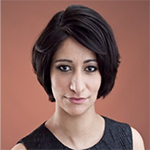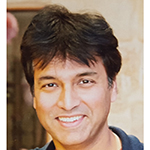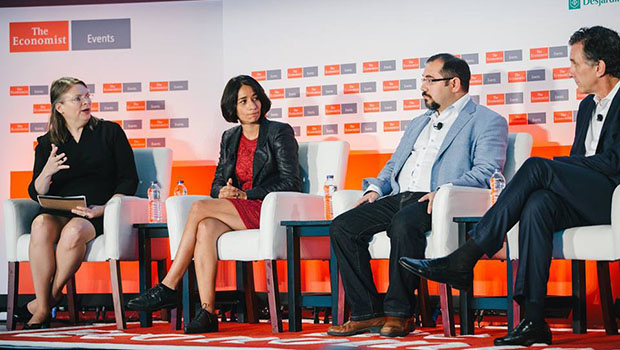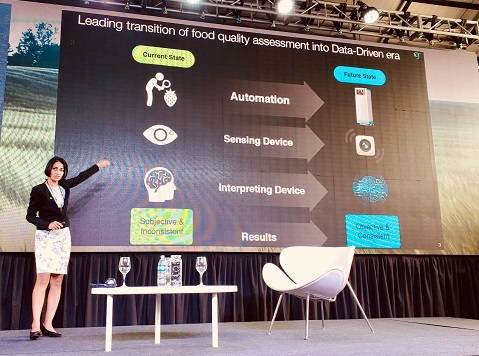* – This article has been archived and is no longer updated by our editorial team –
Below is our recent interview with Miku Jha, the Founder And CEO Of AgShift and Dr. Amitava Bhaduri, CTO Of AgShift:


Q: Miku, can you provide our readers with a brief introduction to AgShift
A: AgShift is an AI based food technology company. We are focused on applying cutting edge technology innovations to solve complex challenges faced by food industry today.
At AgShift, we are designing world’s most advanced food quality assessment system, one which incorporates the best of machine learning and computer vision technologies, disrupting decades-old food quality assessment practices.
AgShift offers industry’s first turnkey food quality analyzer, Hydra F100 BQ, to analyze and grade the quality of commodities. The analyzer is integrated to our cloud-based deep learning platform and comes with a built-in lightweight and easy-to-use touch-based software that has provision for features like weight analysis, size analysis, bar code scanning, color analysis among other advanced features supporting easy discovery of defects and auto-grading of the commodities as a whole.
The turnkey solution enables food inspectors to achieve 10x operational efficiencies during the inspection process and helps organizations with objective analysis, consistent sourcing and brand protection.
Overall, our goal is to provide technology solutions which can bring high level of transparency and objectivity across the food supply chain.
 Recommended: An Interview With StruXure’s CEO And Chief Product Architect, Scott Selzer
Recommended: An Interview With StruXure’s CEO And Chief Product Architect, Scott Selzer
Q: Miku, why is Agshift’s solution applicable now, what are the key drivers?
A: To be honest, this was a much-needed innovation in food quality assessment. The current food quality assessment processes are paper-based and manual, many times leading to inconsistent and subjective outcomes that result in losses in the range of $15 to $16 billion annually, not accounting for millions of dollars lost in recovery costs, claim management and diluted brand equity for the organizations involved.
The labor shortage is another major issue in the food industry as access to skilled and unskilled labors is getting limited everyday. Add to that the manual fatigue of inspectors doing high volume of inspections on a daily basis.
All these hassles can be addressed by automating the inspection process and that’s what AgShift stands for.
Q: Dr. Amitava, how exactly are you using AI at AgShift?
A: As of now, we are applying AI to detect quality defects in fresh fruits and edible nuts. The problem revolves around finding micro-parametrical defects in a monotonous image that lacks sharp contrasting objects.
The first step, of course, is to have a well curated and labeled dataset. This is a continuous process and we’ve been fortunate to have partnered with some of the world’s largest food organizations to build the dataset.
These images are then fed into our AI models which assess them and provide predictive decisions. This allows us to extract defects from the images in an objective manner and at a rapid scale.
Our machine learning model is based on Google’s TensorFlow and we have our own proprietary models, the secret sauce, for feature extraction.
Q: Dr. Amitava, what technical challenges have you faced and overcome in this AI journey?
A: We have faced several challenges throughout our journey and have used those as a learning exercise to enhance our product offering.
Our first challenge was to obtain a well-curated and labeled image dataset since it didn’t already exist in the food industry. To enable data uniformity in a large processing facility churning high volume of inspections daily, we built our own patented analyzer.
Our next problem was on the analyzer itself where we wanted to use an optimized machine vision camera under controlled LED lighting. Finding the correct camera, the best configurations, and integrating the SDK was extremely time consuming and painstaking. Eventually, this exercise paid off. With enhanced image quality, our results got much better.
Our last problem was to eliminate residual subjectivity from the labeled dataset. Even after careful curation, we found occasional misses where images with defects in the questionable zone crept in. This needed manual intervention and a second cleanup, a painstaking process, to be honest.
As of today, we have the most uniform, consistent and curated industry dataset, so to speak, on which we optimize our in-house AI models. With all the enhancements, we are getting exceptional results on commodities we are working on.
 Recommended: Meet Venture X – A Shared Workspace And Community That Is A Blend Of Boutique Hotel And Modern Office Styles
Recommended: Meet Venture X – A Shared Workspace And Community That Is A Blend Of Boutique Hotel And Modern Office Styles
Q: Miku, what’s next for AgShift? Do you have plans to grow, expand or diversify?
A: We are scaling our AI based automated food quality assessment across three sub categories of food – fresh berries, edible nuts and seafood.
Our current commercialization efforts are focused on fresh berries and edible nuts. We will be starting our work on fresh shrimp quality assessment next month.
Geographically, we are expanding our engineering team in India to augment the software development and AI work. We are also partnering with leading universities with advanced research teams and centers in AI domain to explore new frontiers as it applies to food quality assessment and automation
Activate Social Media:


